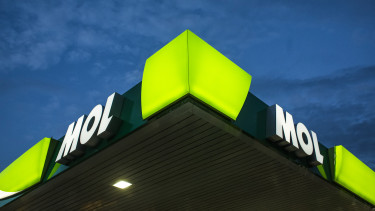Hungarian banks at another level - They have started something completely different

Three-quarters of the National Bank of Hungary's (MNB) HUF 300 billion bond programme will run out before the year ends. Were you surprised by the success of the Bond Funding for Growth scheme?
The facts do indeed confirm the success of this programme. Medium enterprises and large corporations registered amounts exceeding the expectations, and more received adequate debtor ratings than foreseen. By today, a good number of auctions have been completed on the market. This bond scheme allows fundraising without collateral, considering which I was surprised by the investors’ risk appetite, as reflected by the long, typically 7 to 10 year term, bullet repayment (principal is only repaid upon maturity), and volume exceeding several tens of billions HUF in some cases.
So, does that mean that such conditions are not typical of the conventional form of corporate financing in Hungary, i.e. lending?
This is not typical, but even when schemes like this come around, it is with considerably higher interest rates.
MNB participation is clear on the buyer side, but the big question for me is whether this programme has sparked the imagination of institutional investors, even foreign-based ones, other than Hungarian credit institutions, or is it just a matter of restructuring from loans to bonds, and no new financiers have appeared. The programme has opened a new risk level in the banking sector’s corporate financing activity, and represents the next level of risk taking.
In view of these conditions, is Commerzbank participating in the programme as a buyer or an organiser?
At group level, Commerzbank has a very firm concept about the bond market. We have leading positions in this domain through our parent, and have acquired ample experience over long years as to how you can and should develop bond schemes and risks that are acceptable for both the issuer and the investor.
Facts confirm that there are significant risks involved in having to refinance bonds maturing in large volumes and at the same time in an unpredictable economic landscape. This might be problematic in the case of an unfavourable economic climate, and the Hungarian banking sector has no substantial experience in that.
That is why Commerzbank Zrt. views bonds structured so with caution, primarily on account of their bullet nature. On top of that, the term of the bonds goes well beyond European market standards, which typically do not exceed five years. We do not have an investment services unit in Hungary to arrange bond issues and tend to their subsequent IPO, marketing and rate listing, so it is with some regret that we are unable to take part in the scheme as an organiser/distributor. At the same time, we have, needless to say, arranged highly successful bond IPOs for Hungarian firms on European markets several times through our parent.
Banks that do not participate in the scheme, either as organisers or buyers, might lose financed customers due to the programme. Are they clear losers in this scheme?
Clearly you lose out if you do not participate in the programme as an organiser, since this is highly profitable line of business. During buyer or investor participation one major question is whether there are existing customers among the issuer firms, and whether they are going to replace loans they may have or they are raising entirely new, i.e. extra funding in the context of the programme. The effects on the bank’s revenue or profit are therefore unclear. Be that as it may, in the case of Commerzbank, we have positive experience in the overall balance as our customers have been raising extra funding during the scheme so far, and not so much repaying the loans they have outstanding with us.
How does the scheme reduce surcharges or bank margins on the corporate financing market?
If we were to discuss a properly functioning market, the pricing of an unsecured bullet bond must be higher than a secured amortising loan. The logic of economics dictates that margins and yields should not be lower. At the same time, customers are supported by MNB purchases by enabling them to raise funds with favourable costs weighted by the prices offered by market investors. The risk of these bonds cannot be compared with a loan whose structure is totally different, but banking logic would by all means dictate higher prices.
What are your expectations regarding the continuation or outcome of the programme?
I am convinced that just as the Funding for Growth Scheme had multiple phases, I can conceive a raise of limits, and additional phases might follow. Interest for the scheme continues to be significant.
At our Business and Finance Summit 2019 conference, the panel of jurors—of which you were a member—chose István Tóth, Tungsram’s head of finance as the winner of the CFO of the Year Award. What were the reasons for that?
Tungsram by now has developed into a Hungarian multi-national company, and the road leading there must have been rather full of pitfalls. In severing umbilical ties to GE, a new structure had to be created, with new processes and new systems. István Tóth’s application provided a glimpse into what that probably meant. I believe that if only a fraction of what we conceived from what actually happened was an unbelievable amount of work. The head of the finance area had to shine highly complex and very different competences to get through it all. István’s application clearly revealed the kind of challenges they had to face, all the things they needed to introduce, so the award also praises the work of the entire team. The applications submitted for the CFO of the Year Award were actually very high standard even in light of the previous years, but even so the jurors reached the decision on who the winner would be with a resolute majority.
Tungsram’s story just adds to raising the question as to how much the M&A market moves the lending market nowadays? And to what extent is the work of CFOs paving the way for borrowing about similar transformations?
Tungsram’s story can be considered a one-off, but, of course, financing M&A transactions is receiving ever greater emphasis in lending, all the more so because an increasingly broad range of entrepreneurs and company managers are taking over their companies from an ageing group who started new lives when the political transition happened.
This makes for a highly complex picture from the CFO perspective. They form a heterogeneous and broad group of peers, with most of them doing nothing but their daily work, operating firms in the financial sense, and trying to introduce measures for improving efficiency. Another segment of finance executives also attempt to leverage the opportunities on the market through purchases and selling, inspired by the owners.
Due diligence, and producing financial and other impact assessments make the work of these CFOs very exhilarating. There are many of them nowadays. As a bank, we have also seen attempts that were destined to fail, but there is a risk taker group of investors in Hungary that is always on the lookout for new acquisition targets. We are happy to cooperate with them as a financing institution.
How different is the M&A financier behaviour of banks?
The banking market is very heterogeneous in that aspect. There are banks with decidedly strong M&A market competences and strong teams, which thus have a strong risk profile. At the same time, smaller banks do not have the local teams in place for this, and their go-to-market options are limited. We do not have a dedicated M&A team either, but can still participate actively in such transactions by involving our foreign experts.
How murderous is competition among banks in the field of current asset and investment loans required for day-to-day operation and development?
It is something that has not been seen for a long time; two to three years ago, for instance, it was not like this yet. I would rather not highlight any sector, since we can finance everything without exception. And we see competition across the board. There is not a single sector in the Hungarian economy where you could conclude that banks would have less or bigger appetite in general.
How are Commerzbank’s growth figures shaping up?
We have expanded our loan portfolio by over 70% so far this year, which shows that we know and have close ties with the segment coming to Hungary to invest, run projects or have had a long presence here, and continuously improve their operations. Growth has primarily occurred in the share and volume of newly placed loans exceeding EUR 10 million, but we have also managed to acquire many new customers for the bank, in a diversified way. We have managed through our successful and conscious acquisition strategy to seek out quite a few new partners with EUR 10 million plus financing who have contributed to the expanding portfolio.
We primarily provide euro-based funding, which is very competitive on account of our parent bank. We can certainly offer custom schemes to our clients in any currency. If a foreign owner establishes a company in Hungary, we frequently know them very well due to our parent company and understand the kind of risk they represent, and that is something few can compete with in this segment. We can engage them with an “arm’s length” policy. Hungarian companies, on the other hand, prefer us because euro financing is a matter of survival for firms producing for export, and in addition, we have the capacity to provide that through a one-of-a-kind structure that is not necessarily possible for larger banks. All of that is done with a very high level of local decision-making competence, which accelerates and simplifies our decision-making, thereby our customers can receive financing faster than usual on the market.
This is the point where I would like to highlight and thank the work of the entire unit here in Hungary, because being a local bank with 100 people, the only way this is possible is if the front office, back office and risk management have the same understanding of the bank’s strategy and values, and consider those things important. What we have achieved this year is extraordinary, yet it is not for just a couple of people, rather a team achievement. I am proud to have worked with such colleagues for 17 years now.

Company deposits have also increased significantly in recent years. How do you explain that phenomenon?
My assumption is that for the majority of borrowers, deposits are typically denominated in the counterpart currency of their loans. Borrowing is generally most favourable in the currency corresponding to that in which natural collateral is generated, however, companies are also stocking up for bad times using another currency. The close to 15% annual sector-level dynamics for lending also supports generating deposits in and of its own.
What do banks need to be mindful of in the flagging macroeconomic environment?
They must have up-to-date information so that they are aware of what is going on at any given company. It is not just macroeconomic figures they need to focus on, even though they are crucially important, management at the microeconomic level is worth the trouble in many cases. Sectoral reporting, analysis and macroanalysis are important at our bank, but knowing how a given company is doing at any time is much more important. Our partners are monitored on a quarterly basis, but in addition, we also visit them, talk to their managers and owners, see whether their machines are running and what the order backlog is in their books. Many times, that is far more telling than any analysis printout.
Does the car industry, bleeding from multiple wounds or the maxed-out construction industry deserve particular attention nowadays?
We have examined the car industry, and though there are signals suggesting a slow-down, signs calling for greater concern are not prevalent as yet. What you have is a downturn in orders, a commercial war and you could go on, but the point is how various companies respond to that. Manufacturing and production capacities are transferred to Hungary from abroad in some cases, because our economic advantage is still tangible in that regard. The European car industry may be in poor times, but the profitability of the specific company we finance locally is unbroken in most cases. Construction industry is doing very well now, and I expect a change 18 to 24 months from now, but not in the shorter term.












